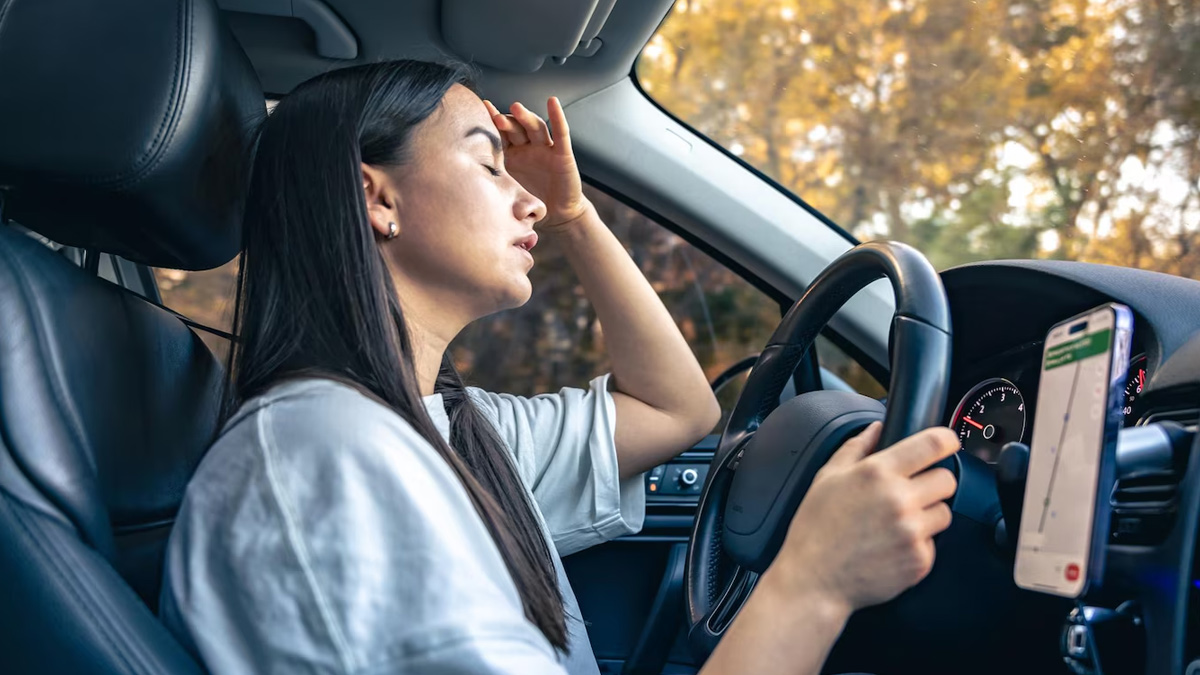
ADHD, or Attention Deficit/Hyperactivity Disorder, isn’t just about being restless or distracted; it’s a real, lifelong condition that affects how the brain works. Often starting in childhood and continuing into adulthood, ADHD can make it harder to concentrate, stay still, or think before acting. And while we often hear about its impact at school or work, it also shows up in daily tasks like driving, where staying focused, reacting quickly, and keeping calm really matter. For someone with ADHD, even a simple drive can feel a lot more demanding.
Table of Content:-
CHECK YOUR
MENTAL HEALTH

Also Read: What Is A Neurodivergent Person? Expert Shares Signs, Causes, and Treatment
How ADHD Affects Driving

In an interaction with the OnlyMyHealth team, Dr Gowri Ravi Chinthalapalli, Consultant – Child Development, Aster CMI Hospital, Bengaluru, says, "Individuals with ADHD may struggle to maintain focus on the road, leading to difficulties in processing information and responding to changing traffic conditions."
"Impulsivity can lead to risky driving behaviours, such as speeding or making sudden lane changes without adequate consideration of the consequences. The hyperactive aspect of ADHD may also contribute to restlessness, making it challenging for individuals to remain calm and composed during long drives. Consequently, these behavioural traits can increase the likelihood of accidents and traffic violations, underscoring the importance of understanding how ADHD affects driving capabilities and the need for tailored strategies to enhance road safety for those affected by the disorder," he adds.
A 2015 review of studies published in the Journal of Neural Transmission suggested that people with ADHD often face more challenges while driving compared to those without the condition. Research confirmed that people with ADHD are more likely to engage in unsafe driving behaviours, such as speeding or being easily distracted. However, not everyone with ADHD is affected in the same way. While symptoms like inattention and impulsivity contribute to driving difficulties, they don’t reliably predict who is at the highest risk behind the wheel.
Dr Chintapalli suggests that these behavioural traits can increase the likelihood of accidents and traffic violations, underscoring the importance of understanding how ADHD affects driving capabilities and the need for tailored strategies to enhance road safety for those affected by the disorder.
What Are The Most Common Driving Challenges In People With ADHD?

People with ADHD often experience a variety of driving challenges that can significantly impact their own safety and that of others on the road. Some of the key difficulties include:
- Easy distraction, causing people with ADHD to miss signals or react slowly due to lapses in focus.
- Poor time management, leading to rushed or risky driving.
- Emotional impulsivity, which can cause frustration or anger on the road
Also Read: #ExpertTalk: Can ADHD Induce Anxiety? Find Out Here
Treatments To Manage The Condition
As per the above-mentioned review, medication, especially stimulant treatments, can improve driving performance in people with ADHD.
Dr Chintapalli lists various treatments, which include:
- Behavioural therapy, which focuses on modifying specific behaviours and thought patterns that may contribute to unsafe driving practices.
- Educational programmes, which provide drivers with valuable information about safe driving techniques and the importance of adhering to traffic laws.
- Medications to address underlying issues such as anxiety or attention deficits that could impair driving abilities. Regular assessments and feedback from driving instructors or occupational therapists can help individuals identify areas for improvement and develop strategies to enhance their driving skills.
By combining these approaches, individuals can not only manage their condition more effectively but also cultivate safer driving habits that contribute to overall road safety.
What Families And Caregivers Of People With ADHD Should Know

“Teens with ADHD can get overwhelmed easily, especially with something as complex as driving,” says Dr Chintapalli. “That’s why it helps to start slow, with clear rules and short, structured lessons.” She suggests using tools like checklists or visual cues to keep them on track and gradually adding more challenges as their confidence builds. “Celebrate their progress, no matter how small, and keep checking in with them. Just asking how they’re feeling after a drive can go a long way in helping them feel supported and understood.
Also watch this video
How we keep this article up to date:
We work with experts and keep a close eye on the latest in health and wellness. Whenever there is a new research or helpful information, we update our articles with accurate and useful advice.
Current Version